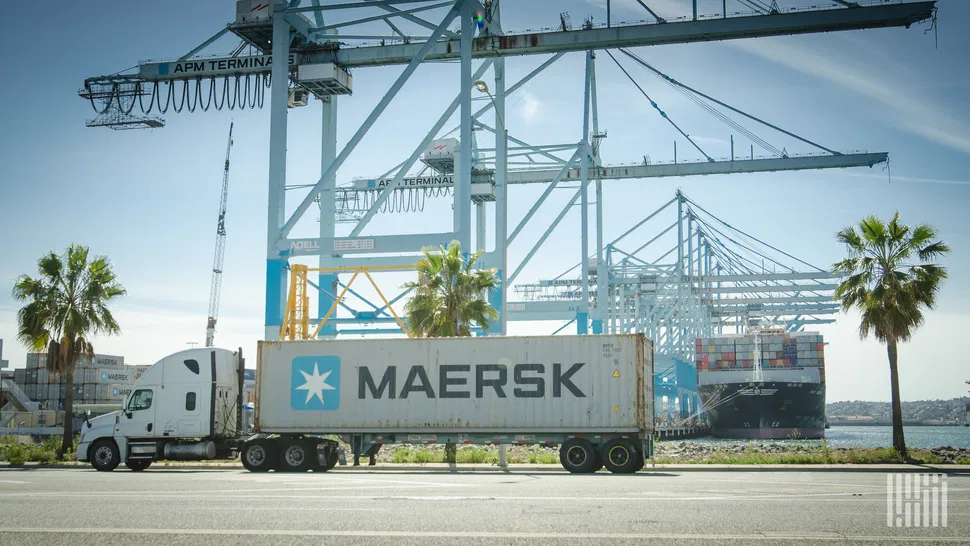Import Bookings Reflect Increased Demand
The latest import trends indicate that demand is showing a 4% increase compared to peak levels in 2024. This suggests a notable change in shipping patterns that could have broader implications for logistics operations globally.
Belangrijkste inzichten
- U.S. container import volumes peaked in early July 2025, marking a shift away from the traditional peak season, likely influenced by recovery from previous disruptions due to tariffs.
- This early peak does not necessarily indicate stronger goods demand. Instead, a flood of orders followed the temporary lifting of tariffs on imports from certain countries, creating an atmosphere of unpredictability.
- Rising inventory costs and the potential softening of import volumes later in 2025 point to challenges ahead for supply chain managers.
- Logistics managers are bracing for difficulties in managing inventory effectively due to this economic and policy uncertainty, leading to a surge in last-minute orders that could strain transportation networks.
Inzicht in het huidige scheepvaartlandschap
Data shows that booking volumes for container imports, tracked through the Inbound Ocean TEUs Volume Index (IOTI), reached a high of 2,356 after Independence Day, which is approximately 4% over last year’s peak volume. While this sounds encouraging, the reality of underlying demand is more layered.
Typically, the index follows consistent seasonal patterns, yet the norms have been upended by ongoing economic challenges, including tariffs imposed earlier in the year. Many importers hesitated, resulting in a significant dip in bookings as businesses faced skyrocketing costs, which had an adverse effect on overall shipping activities.
Navigeren door onzekerheid
With tariffs lifted, many shippers resumed their orders quickly to compensate for the loss of shipments earlier in the year. However, this balancing act presents a dual challenge: increased import costs might drive up prices across the board while dampening consumer demand more broadly.
Indicators such as consumer confidence are faltering, marking a trend that could foreshadow difficulties in the consumer market. The employment sector, despite apparent gains, hides cracks beneath the surface. Analysis suggests stalling job growth, further clouding the economic forecast as more people exit the labor force.
Balancing Inventory and Costs
This wave of uncertainty places supply chain managers between a rock and a hard place; they must juggle how much inventory to hold against varying costs and uncertain demand. The Logistics Manager’s Index (LMI) suggests that while inventory levels have increased, the costs associated with maintaining that inventory are rising even faster.
Maritime carriers are also adapting to expectations of falling demand, evidenced by signs of blank sailings as they manage their capacity to avoid plunging freight rates.
Moreover, the Ocean TEU Rejection Index shows a recent increase in rejected shipments, indicating that carriers are strategically pulling back on certain volumes while waiting out the economic storm. Unpacking this early peak in imports does not explicitly correlate with market strength as it once did.
Impact on Supply Chains
Despite the expected seasonal turn in demand, inventory pressures might lead to a leaner stock approach, causing a rise in last-minute orders. In unpredictable environments, forecast accuracy often plummets, increasing demands on transportation networks to remain flexible and responsive.
Chart of the Week
De FreightWaves Chart of the Week examines trends within the freight market, featuring the Import Ocean TEUs Volume Index to illustrate current importing dynamics. Charts and data updates are vital for visualizing market fluctuations as they occur in real-time.
As businesses adapt to growing uncertainties, using platforms like GetTransport.com becomes essential. Affordable and global logistics solutions ensure efficient cargo movements, whether for office relocations, house moves, or distributing bulky goods.
Wrapping Up: The Road Ahead
In summary, the early peak in maritime imports presents both opportunities and risks for logistics. The evolving landscape of trade presents challenges that are characteristic of changing economic conditions.
Despite diligent reviews and feedback, personal experience remains an irreplaceable teacher. Utilizing GetTransport.com allows for informed decisions regarding global cargo transport without incurring unnecessary costs. With a focus on transparency and a range of options, navigating the logistics of moving becomes much simpler.
For your next cargo transportation project, consider the flexibility and reliability that GetTransport.com offers. This platform adapts to changing demands and facilitates seamless transactions. Start planning your next delivery by booking with GetTransport.com today!

 Vroege maritieme trends onthullen potentiële onzekerheden in de wereldhandel">
Vroege maritieme trends onthullen potentiële onzekerheden in de wereldhandel">